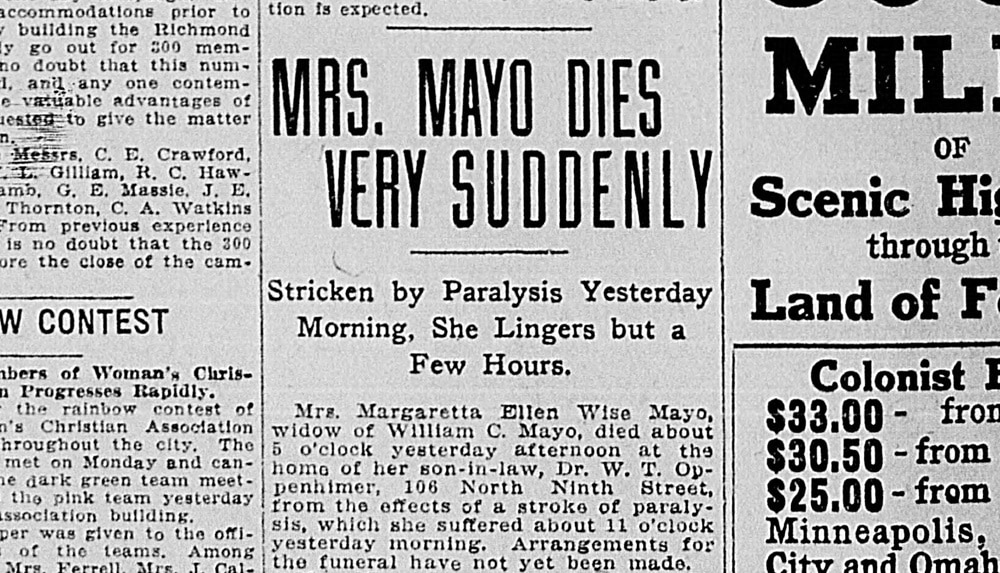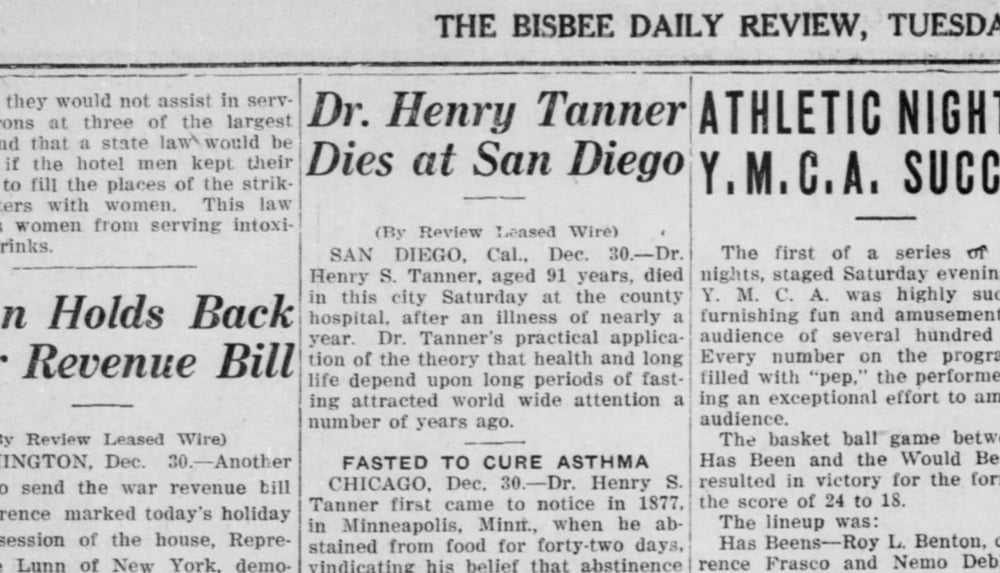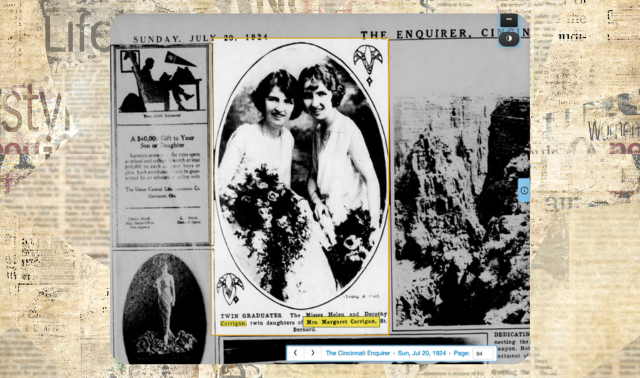
Obituaries and death notices are some of the most sought-after documents for genealogists. In addition to gathering evidence about when and where a person died (which can be difficult to find in the era before statewide vital record-keeping), you might discover other details not available elsewhere:
- the deceased’s occupation and interests
- names of the person’s family members
- the places where he or she lived (sometimes including the hard-to-find birth place of an immigrant)
Obituaries also can give you a glimpse into the cultural nuances of the era. This guide will walk you through the ins and outs of obituary research, including where to look for historical obituaries and death notices, and the clues about your ancestors that you can glean from obituaries.
Types of Death Records in Newspapers
It’s a common misunderstanding that any item in the newspaper concerning someone’s death is an obituary. But in reality, three types of remembrances may have been printed. Although not all are technically obituaries, you can use this guide to help you find and use all three.
Obituaries
An obituary is an editorial article written by a member of the newspaper staff after interviewing the family and gathering biographical facts about the deceased person. Families may request an obituary be written about their relative, but the editor decides if the story is published.
An obituary could be a short article of a few hundred words or a lengthy profile covering half of a page. The length depended on the newspaper, the social standing of the person and other factors (perhaps if the deceased was an advertiser in the newspaper).
Death notices
A death notice is the most frequently published death-related item in the newspaper. These short pieces, which might simply announce the death or also publicize funeral arrangements, are in fact classified advertisements printed in the newspaper, and are usually written by the family. Although not actually an obituary, a death announcement could be just as good for research purposes. Take note of the subtle difference, though, especially if you call a paper asking about its obituaries when your ancestor really appeared in the death notices.
Cards of thanks
Don’t stop with just the obituary or death notice, particularly as you research in older newspapers. Although not as common as it once was, a “card of thanks” in the paper was a way for the family to thank the community for help and support offered during their time of grief. If you were unable to locate the other two notices, you may have more luck with this third item.
A History of Obituaries
Although you should look for an obituary or death notice for everyone on your family tree—not just ancestors—it’s likely that you won’t find anything for some folks.
While remembrances honoring deceased loved ones are common today (in papers or increasingly, online), this wasn’t always the case. American newspapers published articles about local deaths as early as the 1600s, but more-detailed obituaries didn’t commonly appear in newspapers until the early 1800s.
Obituaries usually were reserved for individuals of standing in the local community, such as public servants, soldiers or people who were “interesting” for some reason. If a person didn’t fit those criteria, the family couldn’t afford a death announcement, or the deceased left behind few loved ones, you might not find a newspaper report of his death.
Obituaries were more common in smaller communities than in large cities. In small towns or rural communities, it was fairly easy to include an obituary for nearly every resident of the area. This is still true today. In large cities like Chicago, New York and Los Angeles, however, it wasn’t possible to print an obituary for every person’s death.
In such areas, you’re more likely to see obituaries for prominent, famous or notorious community members. Readers would read those articles even if they didn’t know the person. Other deaths might be recognized with death notices, or not appear in the paper at all.
When you find an ancestor’s obituary, consider when it was written. Understanding the social history of the era can help you interpret the clues it provides. Society dictated what was and wasn’t important to the living. For example, obituaries from the 1800s often focused on the person’s character and virtuosity and tended to be very sentimental. But those from the 20th century spoke more about one’s accomplishments and societal prominence.
Additionally, it was en vogue to write obituaries as poems during the early 19th century. These poems told about the person and his death, or held sentimental value for the family. In the 1880s, obituaries became a bit garish; it was fashionable to write in great detail about the deceased’s cause of death—a trend coined “death journalism.”
During the Civil War, journalists began regularly writing obituaries for newspapers. Papers would print accounts of the great deeds of heroes fallen on the battlefield, and communities at home devoured these tales.
In the last quarter of the 19th century, the obituary of the everyday man emerged. These obituaries honored the lives of both the known and the unknown. Families typically wrote early obituaries, which can potentially provide clues to family dynamics and relationships.
Keep in mind an obituary might be colored by the writer’s point of view and social mores of the times. If the person died from what was considered an unmentionable reason (for instance, suicide historically falls into this category), the cause of death may be conspicuously omitted from the write-up.
Where to Find Historical Obituaries
The proliferation of digitized newspapers, as well as obituary indexing projects, has made these sources easier to find than ever. It helps to know basic details such as when and where he died, but even if you don’t, you might get lucky with just a name search in an online newspaper database or obituary index.
Obituaries normally appear in newspapers within a few days of a person’s death, or at least before the funeral services took place. It’s possible to find one weeks or months later, though, especially if the obituary was printed (or reprinted) in a location other than where the deceased lived. The one caveat to this is modern online obituary websites, which let you add an obituary or remembrance page at any time, no matter how long ago that person died.
Published and online indexes
A great starting point for your search, if it’s available, is an index book or searchable online database of obituaries and/or death notices for the time and place your ancestor lived. You may see these mentioned in local research guides; on the websites of genealogical, historical or lineage societies; or on the local library’s genealogy web page (such as the Dayton (Ohio) Obituaries Index Search form).
Also try a Google search for the name of the county or town and genealogy obituaries or obituary index. Some local repository websites have obituary databases you can search.
Use the information from the index to get a copy of the actual obituary, either on a digitized newspaper website or microfilm. Do this even if the book or database contains a transcription of the obituary—transcriptions may contain errors, or may omit parts of the obituary.
A partnership between FamilySearch and newspaper website GenealogyBank is providing a growing database of obituaries you can search. FamilySearch volunteers are indexing obituaries from GenealogyBank’s collections. You can search the growing indexes, organized by place, for free at FamilySearch. Search results link to the digitized obituary on GenealogyBank, where you can access it with a subscription to the site.
MyHeritage and Ancestry.com each have large searchable obituary collections. One of Ancestry.com’s is an obituary index pulled from its sister site, Newspapers.com.
Digitized newspaper websites
To find obituaries in digitized newspapers, start by searching for your ancestor’s name. Try both a woman’s married and maiden names. If necessary, narrow your results to papers published in the area of the death during the weeks following the death date.
Because the optical character recognition (OCR) software used to index newspapers doesn’t always recognize the text correctly, don’t give up if your initial search comes up empty. Try searching for another person who might be mentioned in a notice, as well as the deceased’s address or street name (because early obituaries or death notices often mentioned where a person lived).
If you’re not having any luck, try browsing papers published around the date of death. After looking through several issues, you’ll get a better sense of how the paper covered local deaths and the browsing will go faster. An obituary or death announcement might appear under a heading such as Deaths, Obituaries or Necrology; in the local news pages; or elsewhere in the newspaper.
The death might have made the front page or news section if the deceased was well-known, served during wartime, was killed in an accident or died under suspicious circumstances. These stories may be told days, weeks or even months after the death, depending on the situation.
Free newspaper sites include the Library of Congress’ Chronicling America, and ProQuest Historical Newspapers (available at subscribing libraries). In addition to the index of GenealogyBank obituaries, FamilySearch has obituary images from other sources for several US states.
Several states have free online newspaper collections, too, such as Colorado, Indiana, Utah and Washington. To find more, run a Google search for the state name and historical newspapers.
As previously mentioned, subscription sites such as GenealogyBank, Ancestry.com and Newspapers.com also provide excellent opportunities for searching digitized or transcribed obituaries.
Microfilmed newspapers
Although newspapers are increasingly available online, many are still only on microfilm. Use the Chronicling America US Newspaper Directory to identify papers published in the time and place your relative died. In addition to traditional newspapers, consider other publications whose target audience included your relative, such as ethnic, foreign-language, trade and religious newspapers.
The listing for each newspaper shows repositories that hold the paper, along with the dates covered and the format (microfilm or microfiche) in the repository’s collection. If none are located near you, contact the repository or visit its website to see if you can borrow the paper through interlibrary loan for a small fee (your local library can help you make the request). You may be able to request a search (usually, for a fee) if you know the exact name and death date. If you’ve found an index entry for the obituary and can provide the date and page number, see if you can order a photocopy. If you do end up scrolling microfilm in search of an obituary, follow the same advice as for browsing digitized papers.
Other sources
Newspapers are the most common source for death notices and obituaries, but they also might appear in a variety of other places: church bulletins, social club publications, college newsletters, employment or trade publications, and more. Look for these publications at a local public, historical society or university library.
For more recent deaths, try online obituary and remembrance websites such as Legacy.com and Tributes. These sites offer a place for families, friends and funeral homes to add information about the deceased person and leave comments. In addition to gathering clues about the person who died, read through the comments. This is a great way to learn about the person and connect with other family members.
Details in Obituaries
When you find the obituary or death announcement you need, enter the source information into your genealogy software (or other source-tracking system) and transcribe the article word for word. Examine it carefully for clues, such as:
Name
The full name of the deceased is normally listed, sometimes along with nicknames, titles or other aliases. In a woman’s obituary, you may find her maiden name or her surnames from prior marriages. If her maiden name isn’t explicitly stated, look for clues in the names of any relatives mentioned (such as a brother).
Age
The person’s age at death in years is usually given, but in some cases, you may find months and days as well. If so, you can use an age calculator to determine the birth date.
Birth and death information
An obituary gives you the date, and sometimes the place, of the person’s birth. You’re more likely to find it if the deceased was an immigrant, pioneer or born elsewhere.
Likewise, you’ll probably learn the date of death and possibly the details surrounding the death (such as whether it was sudden or after a long illness). Earlier obituaries may give the time and location of death.
Spouse and children
If the deceased was married at the time of death, you’ll generally find the name of the spouse. Sometimes, especially for men, though, you’ll find a reference to just “his wife.” You may find information about previous spouses, particularly if the deceased outlived them.
In addition, the deceased’s children (biological, step or adopted) are usually listed, sometimes with their city of residence. Alternatively, they might be represented by a count (such as three children, or a son and two daughters). You may even see names or numbers of grandchildren or great-grandchildren. Married daughters would be listed under their husbands’ surnames; spouses of the deceased’s children also might be named. The city and/or state where surviving children lived at the time may be included as well.
Clues about other family members
Obituaries may mention relatives, both deceased and living, usually siblings, parents or grandparents. Others may be included if they were particularly close to the person. Pallbearers, often family members or close friends to the deceased, also may be named.
Biographical information
These details vary and could include the deceased’s employment history, education, volunteer activities, club participation or memberships, political affiliations and religion. You also might learn details and little-known facts of interest to community members—that she was an early pioneer to the area, for example, or that he was a Civil War veteran.
Funeral arrangements
Particularly if there wasn’t also a death notice, the place of burial or other information regarding funeral arrangements may be included at the end of the obituary.
Church affiliation
You’ll typically learn the name of the deceased’s church, often the one where the service was held. That’s probably where the entire family worshiped, which could lead you to baptismal, marriage and other genealogy records. The obituary also may name the officiant(s) at the service.
Personal character
Although more common in older obituaries, you may find descriptions of the deceased person’s character, for example, mentioning his numerous warm friends or civic contributions.
The discovery of all this great information comes with a warning: Not everything printed in the newspaper was true. Family members—likely, the sources for the information—might have had motivation to present the deceased in the best light or protect their reputation, affecting what details they chose to include or omit. In addition, their recollections might differ, particularly in a time of crisis, or they might report family legends as fact. Hence, obituaries are considered secondary sources, containing information from those not present at the time of the events being discussed.
Evaluate an obituary in the context of what else you’ve already discovered in your research. Does the information in the obituary make sense? If the obituary or death announcement contains details that are new or seem out of place, try to verify them in other sources.
Obituary Fast Facts
- Earliest records: Obituaries date back to the 1600s, but become common (along with death announcements) in the mid-1800s.
- Locations of obituary records: Local public and university libraries, state archives and digitized newspaper websites; also look for published indexes from local libraries and genealogical and historical societies
- Secondary source details: names, birth date/place, age at death, cause of death, place/time/date of death, relatives, funeral arrangements, biographical information
- Search terms: obituary, “obituary research,” “death notice,” “card of thanks”; plus genealogy, historical and/or a place name to narrow results
- Find in the FamilySearch catalog: Search for a place name, then scroll to Obituaries or Newspapers. Click on the record type to view details.
- Alternate and substitute records: death notices; cards of thanks; death certificates; cemetery records; funeral home records; articles about the deceased in society, club or church newsletters
Resources
Websites
- The Ancestor Hunt: Obituaries
- Ancestry.com Obituary Collection
- Chronicling America
- Cyndi’s List: Obituaries
- DeathIndexes.com
- FamilySearch
- GenealogyBank
- History of Obituaries (C-SPAN)
- Legacy.com
- Newspaper Obituaries on the Net
- Newspapers.com
- Obituary Central
- Obituary Depot
- USGenWeb Obituary Project
Publications and Other Resources
- The Dead Beat: Lost Souls, Lucky Stiffs and the Perverse Pleasures of Obituaries by Marilyn Johnson (Harper Perennial)
- How to Find Your Family History in Newspapers by Lisa Louise Cooke (Genealogy Gems)
- Life Writing and Victorian Culture by David Amigoni (Ashgate Publishing)
- Newcomers’ Lives: The Story of Immigrants as Told in Obituaries From The Times by Peter Unwin (Bloomsbury Academic)
- Obituaries: A Guide to Sources by Betty Jarboe (G. K. Hall)
- Obituaries in American Culture by Janice Hume (University Press of Mississippi)
- Obituaries in Genealogy: A Research Tool by Cari A. Taplin (Millennia Corporation)
- Searching For Your Ancestors in Historic Newspapers by Claudia C. Breland (Amazon Digital Services)
Related Reads
Versions of this article appeared in the January/February 2015 and September/October 2022 issues of Family Tree Magazine. Last updated: June 2025
FamilyTreeMagazine.com is a participant in the Amazon Associates Program, an affiliate advertising program. It provides a means for this site to earn advertising fees, by advertising and linking to Amazon and affiliated websites.








